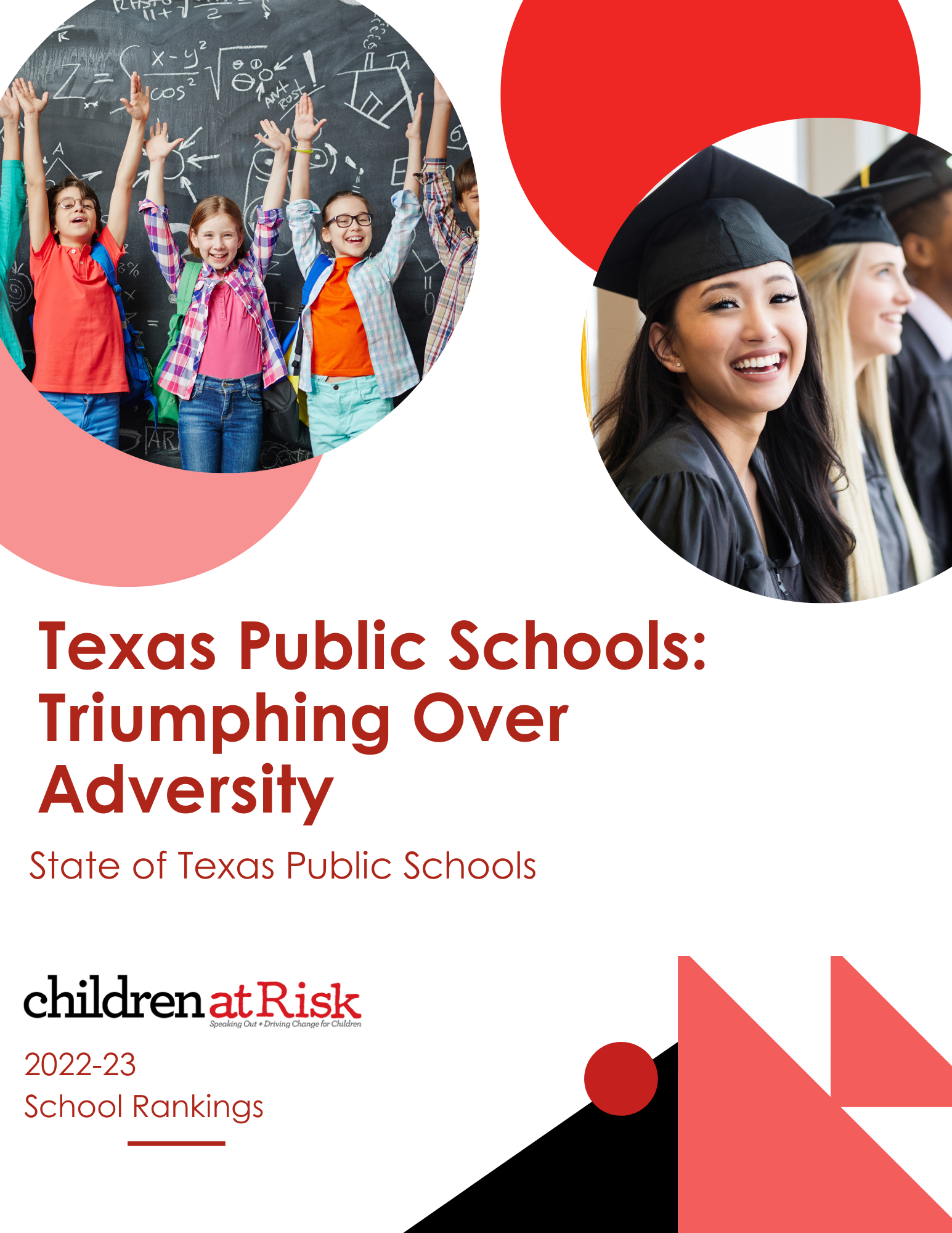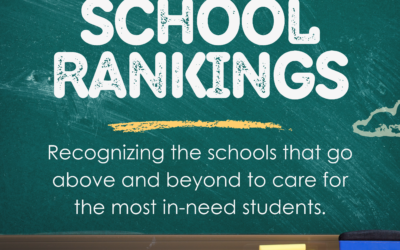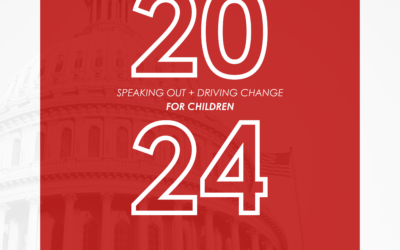
For the past nineteen years, CHILDREN AT RISK (C@R) has ranked and graded Texas public schools to help parents, educators, and community members better understand how their local schools are performing. By providing this information to parents and educators, C@R hopes to encourage greater accountability and transparency in the education system. These grades are intended to be a starting point for discussions on improving our schools and providing better educational opportunities for all students.
What’s in this year’s rankings?
The grading system that C@R uses to rank Texas public schools is based on several factors, including student achievement, progress, and performance gaps. C@R ranks elementary and middle schools across three different domains and high schools across four domains. For elementary and middle schools, grades are based on student achievement, student growth, and relative performance (test scores relative to schools with similar levels of poverty). High schools are graded on an additional metric of college readiness that takes into account graduation rates, AP/IB and SAT/ACT scores and participation.
This iteration of CHILDREN AT RISK’s Annual School Rankings includes the following:
- Student Achievement
- How students do on state standardized tests (STAAR)
- Campus Performance
- How a school compares in test scores to schools with similar levels of poverty
- Student Growth
- How students improve on their STAAR tests in a school year
- College Readiness – High schools only.
- How many high school students are graduating on time and participating in other college readiness activities.
The Gold Ribbon sub-lists highlight high-performing, high poverty schools that are traditional neighborhood campuses; magnet schools and charter schools are not included in the Gold Ribbon sub-lists. High poverty schools are identified as campuses that are more than 75% economically disadvantaged. Those campuses that receive an A or a B in the CHILDREN AT RISK rankings are considered high performing, high poverty.
Click the buttons below to view this year’s lists. To learn more about these new indicators and how this year’s rankings were calculated, read our full methodology report provided below.

Regional Insights
Houston Area
1,311 public schools were evaluated in the Greater Houston Area, including 786 elementary schools and 326 middle schools ranked across three main areas, and 199 high schools ranked.
North Texas
The 2022-2023 school year analysis covers 1,673 public schools in North Texas, including 1,022 elementary schools and 413 middle schools ranked across three main areas, and 238 high schools ranked across four main areas.
North Texas Elementary Schools
West Texas
The 2022-2023 school year analysis covers 218 public schools in West Texas, including 127 elementary schools and 55 middle schools ranked across three main areas, and 36 high schools ranked across four main areas.
Rio Grande Valley
The 2022-2023 school year analysis covers public schools in the Rio Grande Valley including 284 elementary schools and 120 middle schools ranked across three main areas, and 77 high schools ranked across four main areas.
Rio Grande Valley Elementary Schools
Central Texas
The 2022-2023 school year analysis covers 484 public schools in Central Texas, including 283 elementary schools and 135 middle schools ranked across three main areas, and 66 high schools ranked across four main areas.
San Antonio
The 2022-2023 school year analysis covers 582 public schools in the Greater San Antonio Region, including 349 elementary schools and 157 middle schools ranked across three main areas, and 76 high schools ranked across four main areas.
San Antonio Area Elementary Schools
MORE LIKE THIS
2024-2025 Houston School Rankings
CHILDREN AT RISK Releases 2024-2025 Annual Houston School Rankings HOUSTON (Monday, November 10, 2025) – For over two decades, CHILDREN AT RISK has released its annual Texas School Rankings to spotlight academic excellence, support family decision-making, and drive...
C@R Statement in Response to the Release of TEA’s 2025 Accountability Ratings
Media Contacts: Morgan Gerri, 832.600.9354 Rashena Franklin, 713.301.4577 IMMEDIATE RELEASE August 15, 2025 The 2025 TEA Accountability Ratings show what is possible when improvement is measured and made public. For the first time in years, Houston ISD has no...
Press Conference: Education, Legislation, and Workforce Alignment in Texas
Changes to school funding, teacher certification requirements, and public education policy poised to reshape academic recovery and career preparation for Texas students. Media Contacts:Morgan Gerri, 832.600.9354Rashena Franklin, 713.301.4577 HOUSTON, TX (June 6, 2025)...
2024 Annual Report
Dear Friends and Advocates, At CHILDREN AT RISK, we believe that every child deserves a fair shot at success—and we know that it takes all of us to make that happen. Whether you’re a policymaker, educator, donor, volunteer, or advocate, your partnership has helped...
Press Conference: Changes at U.S. Department of Education Impact Support for Emergent Bilingual Students
Massive layoffs at the U.S. Department of Education are predicted to impact 1.27 million Texas children Media Contacts:Morgan Gerri, 832.600.9354Rashena Franklin, 713.301.4577 TEXAS (March 19, 2025) – In an unprecedented move, the U.S. Department of Education...
Advocating in Support of SB 570 & SB 991
Mandi Kimball, Chief Government Affairs Officer with CHILDREN AT RISK, testifies in support of SB 570 & SB 991 during the March 25, 2025 hearing of the Texas Senate Committee on Education K-16. My name is Mandi Kimball, Vice President of Children at Risk, and I am...




